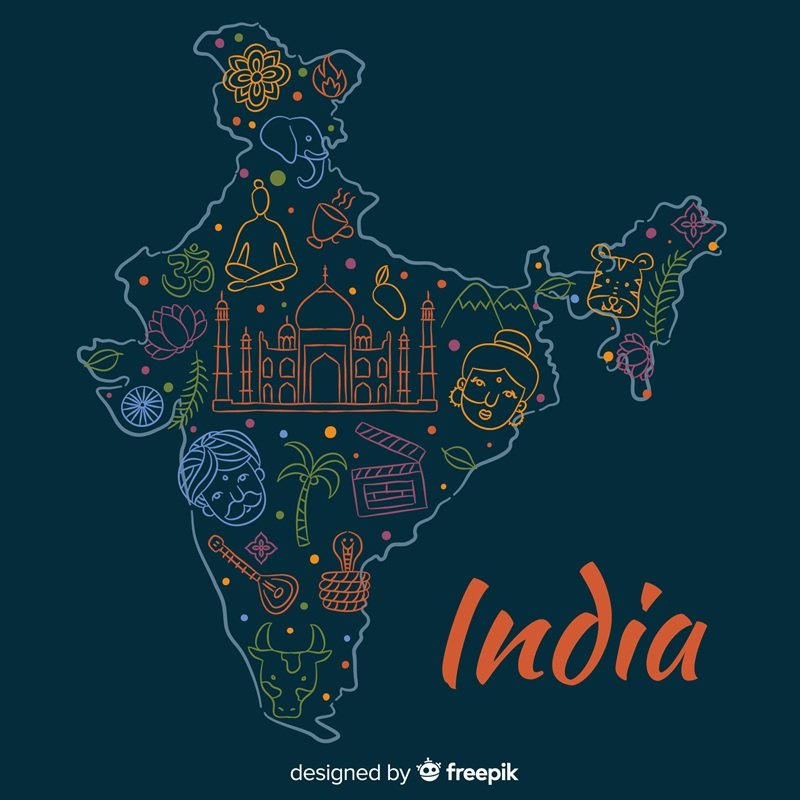Empowering Democracy: Digital Tools Transforming Governance, Elections, and Public Services in Bharat
India, known as Bharat in its constitutional nomenclature, has embraced digital innovation to enhance democracy, governance, and public administration. Leveraging cutting-edge technology, the country has modernized its electoral processes, government functioning, and citizen services, bringing efficiency, transparency, and accessibility to the forefront.
This article explores the various digital tools that Bharat employs for strengthening democracy, enabling e-governance, and ensuring smooth electoral operations.
1. Digital Tools in Elections
Free and fair elections are the cornerstone of any democracy. Bharat has deployed innovative digital solutions to streamline and secure its electoral processes.
a. Electronic Voting Machines (EVMs)
- Introduced in the 1990s, EVMs have replaced traditional paper ballots, making the voting process faster, more accurate, and environmentally friendly.
- Key Features:
- Tamper-proof design to ensure voting integrity.
- Real-time vote counting for swift results.
b. Voter Verifiable Paper Audit Trail (VVPAT)
- Integrated with EVMs, VVPAT allows voters to verify their vote through a printed slip.
- Enhances transparency and builds voter confidence in the electoral process.
c. Electoral Roll Management
- Digital voter databases streamline the management of electoral rolls.
- Tools like the National Voter Services Portal (NVSP) allow citizens to register, update details, and check their voter ID status online.
d. Booth App and cVIGIL
- Booth App: Used by polling officers for real-time voter authentication and turnout tracking.
- cVIGIL: A mobile app enabling citizens to report violations of the Model Code of Conduct, ensuring fair campaigning practices.
2. E-Governance Tools
E-governance bridges the gap between the government and citizens, delivering public services efficiently and fostering transparency. Bharat has implemented several digital platforms to achieve this goal.
a. Aadhaar
- Aadhaar, the world’s largest biometric-based identification system, provides a unique 12-digit ID to every citizen.
- Applications:
- Seamless delivery of subsidies and welfare schemes.
- KYC (Know Your Customer) processes for banking and telecom services.
b. Digital India Initiative
- Launched in 2015, Digital India aims to transform Bharat into a digitally empowered society.
- Key Platforms:
- DigiLocker: Secure digital storage for important documents like PAN, Aadhaar, and driving licenses.
- UMANG App: Unified access to government services across departments.
- e-Hospital: Online appointment and health record management system.
c. e-Governance Portals
- MyGov: A participatory platform for citizens to engage with the government, provide suggestions, and participate in decision-making.
- e-SamikSha: A real-time monitoring and evaluation tool for government projects and policies.
d. GST Network (GSTN)
- A comprehensive online platform for Goods and Services Tax administration.
- Features:
- Simplified tax filing for businesses.
- Real-time tracking of tax compliance.
3. Digital Tools for Democratic Engagement
To strengthen democratic participation and improve accountability, Bharat has developed several digital platforms:
a. RTI Online
- Citizens can file and track Right to Information (RTI) applications online, promoting transparency in government operations.
b. e-Gram Swaraj
- Aimed at empowering local governance, this platform provides real-time information on Panchayat planning, budgeting, and implementation.
c. Social Media for Governance
- Government ministries and departments actively use social media platforms like Twitter, Facebook, and YouTube to communicate policies, gather feedback, and address citizen grievances.
4. Technology in Legislative Functioning
Digital tools are also transforming the way Bharat’s legislature operates:
a. e-Parliament
- Digitization of parliamentary records and proceedings ensures easy access and analysis of legislative activities.
- Features like live streaming of sessions and digital archives enhance transparency.
b. National e-Vidhan Application (NeVA)
- Aimed at paperless governance in state legislatures, NeVA provides legislators with digital tools to draft bills, access reports, and participate in debates.
5. Digital Tools for Public Service Delivery
a. CoWIN Platform
- Played a pivotal role in Bharat’s COVID-19 vaccination drive, enabling citizens to register, book appointments, and receive digital vaccine certificates.
b. Direct Benefit Transfer (DBT)
- A digital mechanism to transfer subsidies and welfare benefits directly to beneficiaries’ bank accounts, minimizing leakages and ensuring timely delivery.
c. GeM (Government e-Marketplace)
- A procurement platform for government departments to acquire goods and services, ensuring transparency and cost-effectiveness.
6. Cybersecurity Measures
As digital adoption increases, ensuring data security and privacy becomes critical. Bharat has established robust frameworks to safeguard its digital infrastructure:
a. National Cyber Coordination Centre (NCCC)
- Monitors cybersecurity threats in real-time and coordinates responses.
b. Data Protection Framework
- The Personal Data Protection Bill aims to regulate the collection, storage, and usage of personal data, ensuring citizen privacy.
7. Challenges in Digital Governance
Despite significant progress, several challenges persist:
- Digital Divide: Limited internet access in rural areas restricts equitable participation.
- Cyber Threats: Increasing reliance on digital systems makes them vulnerable to cyberattacks.
- Resistance to Change: Bureaucratic inertia and lack of digital literacy among officials can hinder adoption.
8. The Way Forward
To further enhance digital governance and democracy, Bharat must focus on:
- Bridging the Digital Divide: Expanding internet access and digital literacy in rural and remote areas.
- Strengthening Cybersecurity: Investing in advanced security measures to protect critical digital assets.
- Citizen-Centric Design: Ensuring that digital platforms are user-friendly and accessible to all.
Conclusion
Bharat’s journey towards becoming a digital democracy is a testament to its commitment to modernizing governance and empowering citizens. By integrating technology into elections, governance, and public service delivery, the nation is building a transparent, efficient, and participatory system. With continuous innovation and a focus on inclusivity, digital tools will play a pivotal role in shaping the future of Bharat’s democracy.







